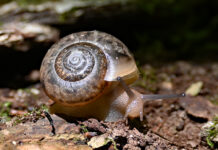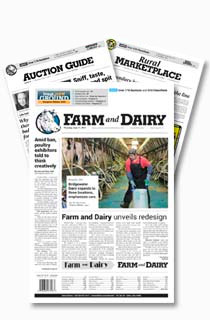It was enjoyable to tag along with my dad in the later years of his life to toy tractor shows, hearing joyful stories of his early farm days.
“Look at that! A replica of the really old corn planters!” he might say, and it would prompt a conversation from his boyhood. I have kicked myself at different times for not writing down some of the specifics he shared with exactly how corn was planted when he was a very young boy in the late 1930s and early 1940s.
I have been gifted this conversation and a general understanding through my dad’s childhood friend, Cloyd “Junior” McNaull, and I am grateful.
“Back in the 1930s and 1940s, Dad planted corn with the F-14 and a two-row corn planter. He would prepare the field by plowing, and then he would take the disk with a spike-toothed harrow hooked to the disk,” McNaull writes in stories at the request of his great-grandson Xander.
“Dad’s corn planter planted corn and fertilizer in ‘hills of three or four seeds’ every 3 feet in a row. The corn planter had a row marker on each side. Depending on which direction he was going, he would lower the opposite row marker to mark where to plant the next row … there was a long wire with knots on it every 3 feet secured at the end of the field. As he drove down the row, the knots would trigger the drop of the seed and fertilizer every 3 feet. Thus, the corn was planted 3 feet apart in each row and every row was 3 feet apart.”
Then farmers waited for the corn to come up. After a week or so, Junior was called into service. “Dad had a corn planter that was at least 30 inches high. It had two hoppers, one for corn seed and one for fertilizer.”
Junior was sent to walk the field, row by row, which was close to a half-mile long, carrying that corn plunger, looking for hills without corn sprouts.
“If I found one, I would plunge the corn plunger into the ground, leaving fertilizer and seeds. The plunger would cover the new seeds with dirt when it was pulled out,” he explains.
He recalls how tiring it was, carrying that heavy plunger up and down all those rows. My dad had told this same story, and now I can picture exactly what he described.
“After I received my discharge from the USAF in 1955, I restarted the Brytes 4-H Club, with (neighbor and friend) Bob Moherman’s help. The club had not functioned since 1943 due to its advisor, Eldon Crone, having been drafted into the Army in World War II,” Junior explains.
“In order to raise money for the 4-H club, each year we would plant one half acre or more of sweet corn with the old corn plunger. We sold the sweet corn to a grocery store called the Sanitary Market. We made a nice profit for the club,” he writes.
To bring this story full circle, the man who had become my dad’s father-in-law in 1951 is the fellow who had done much of the buying and reselling of produce for the Sanitary Market.
It is interesting to note this slice of the local economy as it evolved from a local family to the sellers of the seed and fertilizer, to the buyers of goods to feed a community while supporting youth in 4-H clubs.
Years later, it is the nostalgia for those days that made my dad and so many others happy, attending toy shows with tractors and implements in 1/16th scale from their youth.













